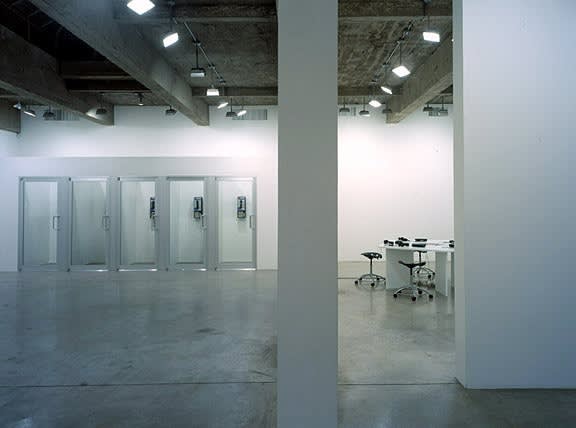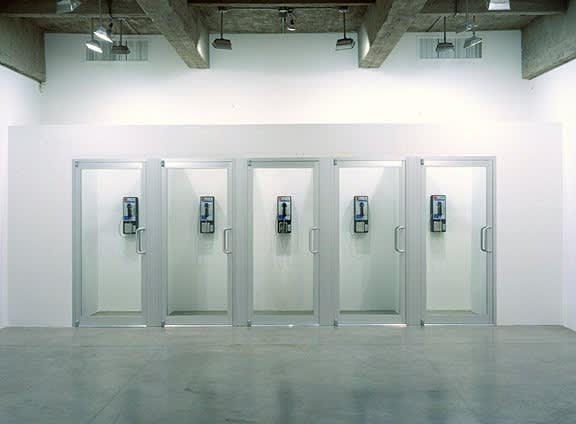Tanya Bonakdar Gallery is pleased to present ‘Phone Home’, its second solo exhibition with Michael Elmgreen & Ingar Dragset. An ‘auto performative-installation,’ where the audience itself performs and shapes the visual narrative, Elmgreen & Dragset present a configuration of payphones for functional use. Encouraging visitors to connect with family and friends internationally at cheap rates, an investigation ensues of the social reach of art and its influence in the world beyond the gallery. But in a layer of complexity that further subverts the conventions of public and private behavioral patterns, the calls are monitored (by other visitors) and recorded in a readily-accessible adjacent gallery. Raising issues of voyeurism and surveillance, the work seems particularly relevant in the context of modern global communication and exchange, ‘identity theft’ and the recent USA Patriot Act.
Five telephone booths will be installed in the main gallery space, constructed in glass and white drywall consistent with the principles of Minimal design that Elmgreen & Dragset have referenced throughout their ongoing series of architectural installation works. The second gallery features a set of recording and listening devices, one for each phone.
Provoking an unusual series of social interactions, the work explores an artwork’s potential reach. First, by simple means the work extends far beyond the physical limits of the gallery, reaching through space and physical distance on a global scale. Then, as the visitor/caller describes his or her situation to the person at the other end of the receiver, the work further mediates itself to establish a concrete link between the activity within the gallery space and the outside. Also, the work allows for visitors to engage in activity that places their own private behavior on public display – specifically exploiting everyday ‘normal’ behavior and gesture as performance. In this sense, there are several aspects that exceed conventional definition. Upon entering the phone booths, the visitor immediately loses any external perspective and becomes an actor - exposed due to the transparency of the installation. And the listening station is also clearly visible. In addition to suggesting the voluntary nature of the surveillance, this level of transparency offers the visitor yet another role among the cast improvising the drama of social exchange.



